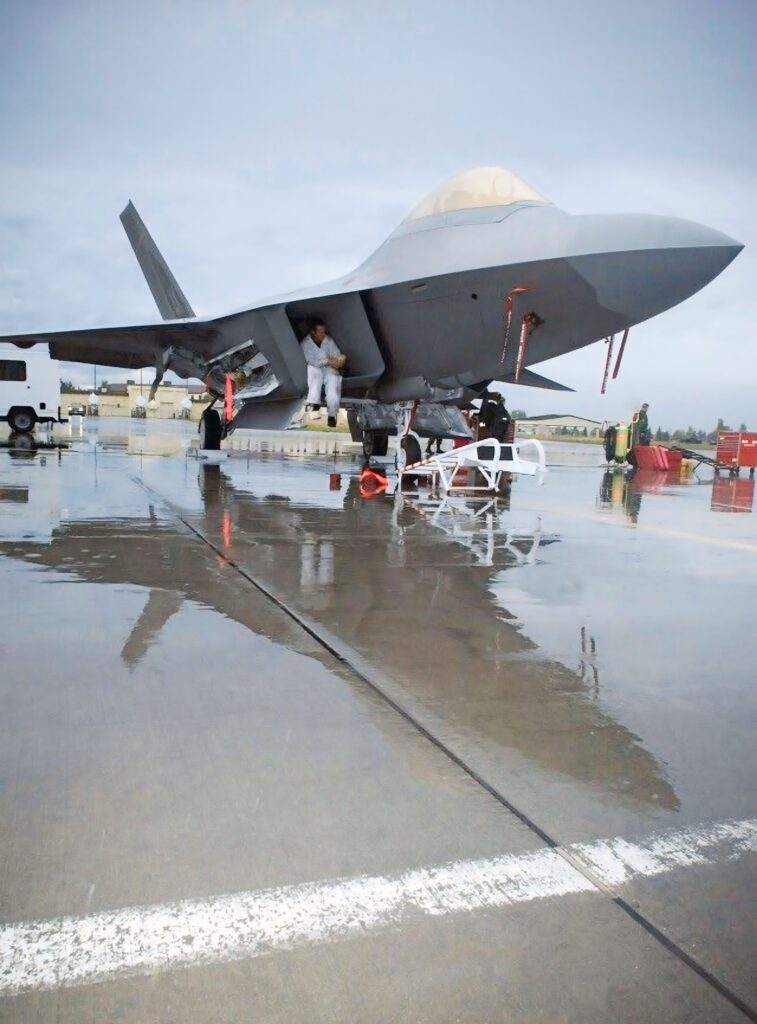
The F-22 Raptor is one of the most advanced fighter aircraft ever built, representing the pinnacle of American air superiority design. Developed by Lockheed Martin in partnership with Boeing, the aircraft was introduced into service with the United States Air Force in 2005. Its main role is to dominate the skies by combining stealth, speed, maneuverability, and advanced avionics in a single platform. Even though production ended in 2012, the Raptor remains unmatched in several aspects of modern aerial combat.
At the core of the F-22’s reputation is its stealth capability. The airframe was designed with radar-absorbent materials, internal weapon bays, and angled surfaces that significantly reduce its radar cross-section. This makes it difficult for enemy systems to detect and track the jet, giving pilots a major advantage in both offensive and defensive operations. Unlike earlier stealth aircraft that sacrificed performance for low visibility, the Raptor combines invisibility with high speed and agility.
Performance is another defining feature. The F-22 is powered by two Pratt & Whitney F119-PW-100 turbofan engines equipped with thrust vectoring nozzles. These allow the aircraft to change the direction of engine thrust, granting it remarkable maneuverability. As a result, the Raptor can execute tight turns and complex aerial maneuvers that most other jets cannot match. The engines also provide supercruise capability, enabling the aircraft to fly at sustained supersonic speeds without using afterburners. This gives it a faster response time and longer range during missions.
The avionics suite on the F-22 is equally impressive. It integrates radar, electronic warfare systems, and sensors into a network that provides pilots with unmatched situational awareness. Its AN/APG-77 radar can detect and track multiple targets at great distances while remaining difficult to detect itself. The aircraft’s onboard computer systems fuse information from various sensors, presenting the pilot with a clear and comprehensive picture of the battlefield. This allows faster decision-making and increases mission success rates.
Armament is housed internally to maintain stealth. The F-22 carries six AIM-120 AMRAAM and two AIM-9 Sidewinder missiles for air-to-air combat. It is also equipped with a 20mm M61A2 Vulcan cannon for close-range engagements. While primarily designed for air superiority, the Raptor can carry precision-guided bombs for ground-attack missions, making it a versatile multirole fighter.
Despite its unmatched capabilities, the Raptor’s history is not without challenges. High development and production costs limited the total number built to 187 operational aircraft. The program was eventually shut down to focus resources on the F-35 Lightning II, which emphasized affordability and versatility. However, many analysts still argue that the F-22 remains the world’s most capable fighter, with few rivals approaching its level of dominance.
Today, the F-22 continues to serve as the backbone of American air superiority strategy. It operates alongside newer platforms like the F-35, complementing them with its unmatched combat edge. While export of the Raptor was banned to protect sensitive technologies, its influence is visible in the design of other advanced fighters worldwide. For now, the F-22 Raptor stands as a symbol of cutting-edge engineering and a reminder of America’s determination to control the skies.


